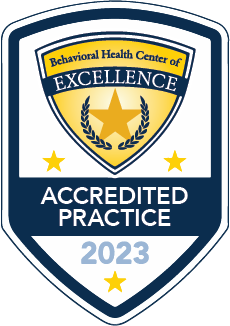Redefining “Problem Behaviors”

Imagine that you are coming in with your child to your first initial assessment for Applied Behavior Analysis (ABA). The Board Certified Behavior Analyst (BCBA) doing the assessment will be asking a variety of questions, and one of those questions will be about “problem behaviors”. Typically, when we think of “problem behaviors”, we think of tantrums, self-injurious behaviors, or harm to others. However, there’s more to these “problem behaviors” than you may initially think.
What Are ‘Problem Behaviors?’
When we think of “problem behaviors”, we strive to decrease these behaviors; however, it is equally important to replace these behaviors with appropriate behavior that can be increased over time. Without a replacement behavior, “problem behaviors” do not go away.
When we think of problem behaviors, we must ask ourselves 3 questions:
- Is this behavior a safety concern to themselves or others around them?
- Does this behavior prevent the child from living a least restrictive life?
- Does this behavior prevent the child from acquiring new skills?
If the answer is “yes” to at least one of these questions, then the behavior is considered a “problem behavior.” Now, let’s go through these questions one by one.
InBloom Autism Services specializes in early intervention ABA Therapy for young children with autism. Tour an InBloom Learning Center near you!
1. Is This Behavior A Safety Concern?
When any “problem behavior” is a safety concern to themselves or others around them, this is a red flag. Eliminating these behaviors first is a high priority as these behaviors are high-risk to themselves and others around them.
But what is considered “high risk”?
Many factors can be considered for a high-risk “problem behavior”, including if it hurts others or themselves or leads them to dangerous situations. For example, if your child is running across the street without looking both ways to get ice cream without your permission, this is considered high-risk for a multitude of reasons (i.e. they’re not showing awareness of their surroundings, not asking permission before leaving, etc.).
As another example, let’s say your child is placing inappropriate items in their mouth. This can be high risk because it can lead to a choking hazard.
2. Does This Behavior Prevent the Child From Living A Lease Restrictive Life?
When “problem behaviors” prevent the child from living a ‘least restrictive life’, this is another major concern for the future. It’s important to intervene as early as possible because we want our children to grow up to be independent adults.
For example, if your child tantrums instead of asking for help, this is considered a “problem behavior” because the child is not communicating their wants and needs, and it’s also preventing them from acquiring the skill of communicating with others. We would want to decrease tantrums (the “problem behavior”), but we would then work on having the child ask for help using their preferred mode of communication.
For additional information on tantrums, you can read our blog on extinction bursts here.
OKAY, BUT WHAT IF MY CHILD CAN’T YELL “HELP”?
Not a problem! We can modify how the child asks for help. For example, the child can point to a picture that says “help” on it. We can also use picture exchange, meaning once the person picks up the word “help” and hands it to you, then you can help.
3. Does This Behavior Prevent the Child from Acquiring New Skills?
When “problem behaviors” prevent the child from acquiring new skills, this can present a problem because the goal is for the child to learn skills that pertain to their everyday living.
So How Can We Get Rid These ‘Problem Behaviors?’
For us to eliminate problem behaviors, we first must determine the function of the behavior (sensory, escape, attention, or access to tangibles). Once that’s done, we have to replace it with a different, alternative, and appropriate behavior. That behavior can be compatible or incompatible with the problem behavior, but we want to choose a behavior that is functionally equivalent to the problem behavior.
Some examples include:
- If your child screams to get your attention, a functionally equivalent way to gain attention is to teach them to tap you on the shoulder or say “Excuse me”.
- If your child throws a tantrum because they can’t eat a cookie at the moment, a functionally equivalent way to work on this is to work on tolerating “no”, give them options that they can eat at the moment, or teach them how to wait.
- If your child is sticking toys in their mouth, a functionally equivalent way to work on decreasing this is to have them chew on something appropriate (such as a chewy or food) and teach them how to play with toys appropriately.
- If your child cries because they don’t want to do their homework at the moment, a functionally equivalent way to escape their homework is for them to ask for a “break”.
Quick Recap
“Problem behaviors” are behaviors that can cause safety concerns, can restrict them from living a least restrictive life, and/or can prevent a child from acquiring new skills. If a “problem behavior” causes any of these things, then it’s a behavior that warrants decreasing. However, it’s important to note that we cannot decrease a “problem behavior” without teaching and increasing the use of a functionally equivalent behavior. Finding functionally equivalent behaviors for problem behaviors is the most successful way to decrease “problem behaviors”, and it’s OK to modify how to teach replacing them! After all, in ABA, treatment & how we teach replacement behaviors should ALWAYS be individualized across each child!
Written by: Michelle Z. – BCBA
InBloom Autism Services specializes in early intervention ABA Therapy. Our Therapists undergo training to develop a curriculum specifically designed for children aged 5 and under with autism. Our Learning Centers also offer a safe and enjoyable environment for children to interact with their peers. Learn more about our ABA Therapy program!


